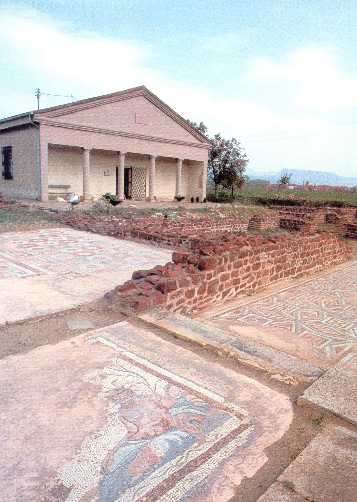MEDIANA

Grateful to his birthplace, the Emperor Constantine the Great paid respect to his native city by "decorating it magnificently", as a chronicler recorded. For this very reason, Niš had experienced the peak in its economical, cultural and political blooming during the 4th century AD. The reflection of its former splendor has reached our times owing to archaeological excavations undertaken several decades ago at the site of Mediana. This suburban area, three Roman miles away from the city, as Ammianus Marcellinus noted, occupied the ground of almost 40 ha. It contained residential and luxurious buildings with mosaic floors, frescoed walls and multicolored marble statues, which certainly had enabled exceptionally high housing standards. The imperial palace, thermae, nympheum, luxurious villas, granaries, the unique water-supply system, as well as an unexpectedly rich sacral complex with a baptistery, represent the main contents of the Mediana Complex.
The nearby "Elektronska industrija" factory grounds hide the walls of a refuge fortification that had secured comfortable and carefree life to the Mediana residents. However, the Huns followed by the Goths demolished Mediana in the 5th century. Even the great restoration undertaken by the Byzantine Emperor Justinian the Great could not bring former splendor to Mediana. By the arrival of Slavs Mediana faded away, but the remains of it are plenty and significant.